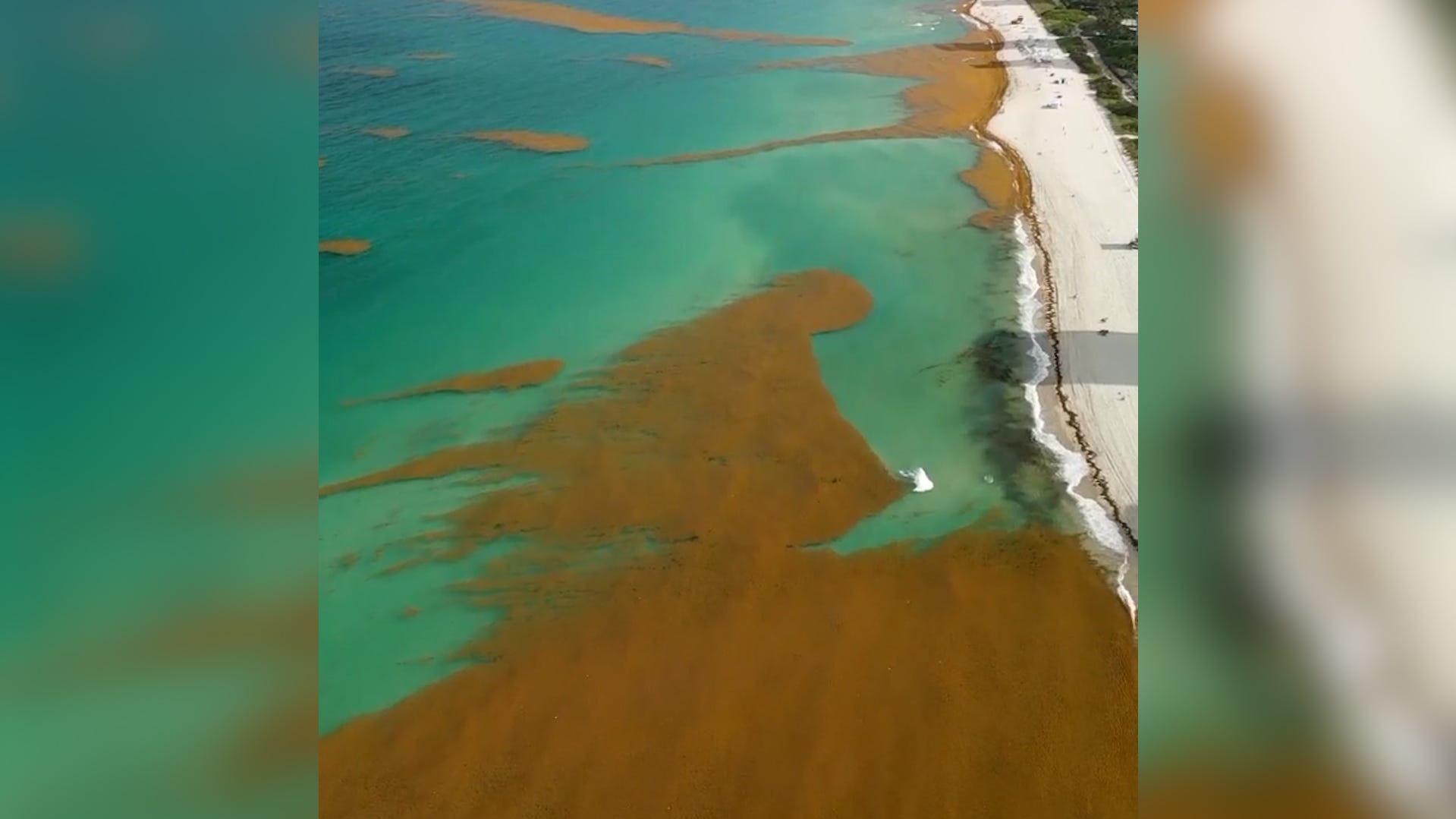Beachgoers beware: Experts fear a record year for stinky, slimy seaweed

It's back.
Sargassum, the stinky, slimy bane of beachgoers worldwide, returned to swarm South Florida beaches in late April as masses of the seaweed were spotted lining the shores of Miami Beach, a famous destination and beach getaway for travelers.
Does this mean we're in for a rough year for seaweed?
Florida Atlantic University research professor and algae expert Brian LaPointe told Paste BN April 29 that "Florida could be seeing quite a bit of sargassum in the coming months." He said it's already a major problem this year in the beaches of Mexico's Yucatan Peninsula, where locations such as Tulum and Playa del Carmen have seen excess amounts of seaweed.
An updated forecast for sargassum in the United States will be released by the University of South Florida on May 1, oceanography professor Chuanmin Hu told Paste BN.
Record-challenging bloom
Unfortunately, scientists say a record-challenging bloom of the weed has recently been seen lurking in the tropical Atlantic Ocean.
Researchers at the University of South Florida said in early April that an estimated 13 million metric tons of seaweed has been observed in the water between Africa and the Caribbean Sea. That topped the old March record of 12 million metric tons and is expected to only multiply as the peak months of June and July close in.
“We predicted back in December and January this would be a major year, but no one was certain whether it would be a record year,” Hu said. “But now we already have a record March, and we have some confidence that this will be another record year.”
What is sargassum?
Sargassum is floating macroalgae that has inundated beaches in Florida and the Caribbean since 2011, damaging tourism, harming the health of humans and marine life and costing local governments millions of dollars a year to clean up.
It is also a lifeline for fish nurseries, hungry migratory birds and sea turtle hatchlings seeking shelter in its buoyant saltwater blooms.
But in mass quantities, it chokes life from canals, clogs boat propellers and is a killjoy at the beach, piling up several feet deep like a rotting bog emitting hydrogen sulfide – which smells like rotten eggs – as it decomposes. It can irritate the eyes, nose and throat.
Why could this be a record sargassum year for Florida?
LaPointe said drought in South America the past couple of years led to less water flowing from the Amazon River into the Atlantic, which meant fewer nutrients to feed the fields of floating sargassum.
This year, the Amazon is flowing again, LaPointe said.
“I’m looking closely at the influence of the Amazon and how that correlates with drought and the downturn in biomass production,” said LaPointe, who has already come across large mats of beached sargassum in the Keys. “We’re really coming out of that drought now.”
LaPointe told Paste BN that nutrients such as nitrogen are the key to sargassum blooms and that runoff from rivers such as the Mississippi also can exacerbate blooms in the Gulf.
Is it safe to swim in sargassum?
Sargassum is generally safe to swim in but can turn the water an uninviting brown and be uncomfortable when it scratches your skin.
Why can't the seaweed just be cleaned off Florida beaches?
In Palm Beach County, for example, beach managers are often constrained by turtle nesting season, which began March 1. Most cities have specially licensed contractors who use tractors to clear the sargassum at least twice a week, but they are confined to areas below where turtles may nest.